Books
A Picture Book of Lewis and Clark (Picture Book Biography)
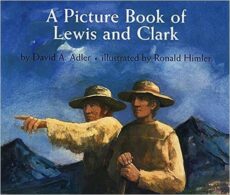
The story of the Corps of Discovery has recently recaptured American interest, and Adler's version of the historical expedition captures the spirit of adventure for a young audience. The most important facts and dates of the expedition are related in a casual, interest-grabbing style. The watercolor paintings span two-page spreads and convey the grandeur and scope of the unexplored West. The text is well placed within the illustrations. A worthy addition to the series, it will be used for reports as well as for general interest.
Undaunted Courage: Meriwether Lewis, Thomas Jefferson and the Opening of the American West
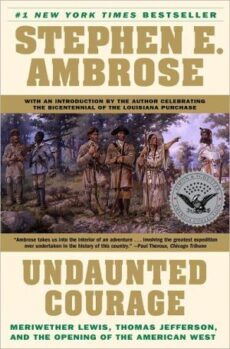
A biography of Meriwether Lewis that relies heavily on the journals of both Lewis and Clark, this book is also backed up by the author's personal travels along Lewis and Clark's route to the Pacific. Ambrose is not content to simply chronicle the events of the “Corps of Discovery,” as the explorers called their venture. He often pauses to assess the military leadership of Lewis and Clark, how they negotiated with various native peoples, and what they reported to Jefferson.
The Journals of Lewis and Clark
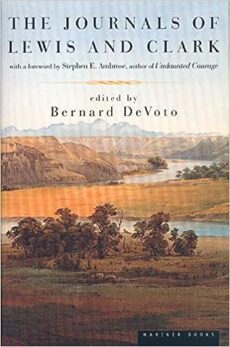
While they are very enjoyable, The Journals of Lewis and Clark have a tendency to make for taxing reading. This is because the editor left Lewis' and Clark's grammar and spelling almost completely intact. (Both men had an excellent ability to hold their readers' interest with their colorful and dramatic prose, but they were both atrocious spellers.) This edition of The Journals of Lewis and Clark is highly entertaining and well researched. It's the best and most essential volume for those who do not wish to read the complete multi-volume version of this work.
Lewis and Clark and Me: A Dog's Tale
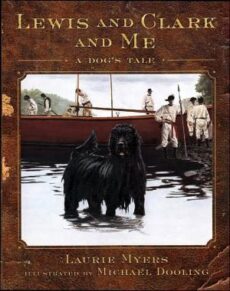
Seaman, a highly intelligent and sensitive dog that accompanied the Corps of Discovery, introduces youngsters to this exciting epic of United States history. The chapters are based on accounts in Lewis's journals, from which a relevant quote closes each fictional episode. The focus is on the canine's encounters with other animals: squirrels, bear, buffalo, beaver. Attractive, realistic paintings illustrate the book, giving a feel for the period and, most importantly, a visual personality to Seaman.
Plants on the Trail with Lewis and Clark
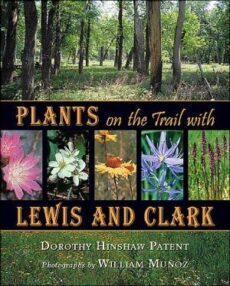
A companion volume to Animals on the Trail with Lewis and Clark. An excellent two-page map shows camps and landmarks along the route of the explorers from the (current) Iowa/Illinois/Missouri border north and west to the Pacific Ocean at what is now the Washington/Oregon border. Lewis and Clark led the army expedition to explore and map more than 2,000 miles of North America, find a water route across the country, discuss peaceful trade with the Indian tribes, and study and record soil and vegetation along the way. Lewis's knowledge of plants and their medicinal properties and Clark's familiarity with waterway navigation and land surveying led to the overwhelming success of this amazing journey. The explorers filled journals with carefully detailed descriptions of various plant species in their natural settings as well as how they used them as building material, food, and medicines. Patent gives examples that attest to the cleverness and mechanical abilities of the explorers and to the aid they received from the Nez Perce, Mandan, and other tribes. Good-quality, full-color photos and reproductions clearly extend the text. A listing of plant specimens collected and dried by the pair that can be found in the Lewis and Clark Herbarium (Philadelphia), sources for further reading, and a thorough index are appended. The author's knowledge of and keen interest in her subject matter is very evident in this fascinating account that helps bring to life an amazing episode in American history.
The Lewis and Clark Trail Then and Now
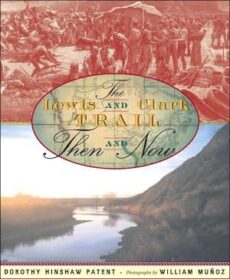
In this well-illustrated, large-format book, Patent provides a succinct narrative account of the Lewis and Clark Expedition, beginning with a realistically harsh, you-are-there introduction to life with the Corps of Discovery. Among the many books on the subject appearing in time for the bicentennial of that event, including Patent's Animals on the Trail with Lewis and Clark (2002), this one distinguishes itself by incorporating information about how the land, rivers, vegetation, wildlife and trails today differ from what Lewis and Clark saw 200 years ago. Each double-page spread focuses on a specific topic, such as “Meeting the Sioux” or “The Great Falls,” and most are introduced with a small map and a journal entry by Lewis, Clark, or another expedition member. The full-color illustrations will include maps, present-day photos, and reproductions of the period. A well-written presentation of the topic.
Animals on the Trail with Lewis and Clark
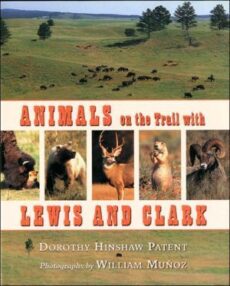
This competent and attractive title presents a unique approach to the Lewis and Clark Expedition, which is receiving much publishing attention as its bicentennial approaches. Patent encapsulates the journey of the Corps of Discovery while focusing on the major wildlife species that the voyagers encountered. The buffalo, prairie wolf, coyote, and grizzly are given extensive treatment, and the prairie dog, antelope, mule deer, and several bird species are discussed. Munoz's fine photographic work in full color is featured on almost every page, making this an inviting introduction to the expedition, or to learn about the rich contribution made, particularly by Lewis, to the identification and description of western North America's prodigious wildlife. The “To Learn More” section includes seminal sources and Web sites, and the “Chronology of Animal Discoveries New to Science” provides many possibilities for curriculum development or enthusiastic young naturalists.
Lewis and Clark: A Prairie Dog for the President (Step into Reading, Step 3)

The history is handled with a light touch in this Step into Reading title about the American West, and Manders' colorful cartoon-style art is a perfect match for the storytelling. President Jefferson asks Lewis and Clark to go west, and “make maps, and explore rivers . . . collect plants and draw wild animals . . . send presents.” Comic scenes show the explorers trying to catch buffalo and grizzly bears to send to the president, but they settle on the cute, little, wild dog, which scouts take back to Jefferson together with a huge load of plants, skins, and animals.
Lewis and Clark's Mountain Wilds: A Site Guide to the Plants and Animals They Encountered in the Bitterroots

The author takes the reader from high on the Lolo Pass through the Bitterroot Mountains to the west while describing more than one hundred plants and animals first recorded by Lewis and Clark. Ritter uses color photogrphs and black and white drawings to aid recognition of the species she describes.
How We Crossed The West: The Adventures Of Lewis And Clark
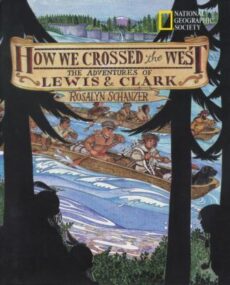
simplified version of the diaries of Lewis and Clark; in an introduction, Schanzer explains how she condensed much of the excitement and adventure of the 40 volumes into this one. The book follows the route mapped out on the end papers, beginning with President Jefferson's request that the two explore the west, and ending when Lewis and Clark return two years later to St. Charles (near St. Louis), long after everyone thought they'd died. In that time the two men discovered many new animals and plants, met with Indian tribes, and created new maps of the uncharted territories. Schanzer often breaks up the page into a series of vignettes with captions, effectively covering many of their experiences in a small space. Her drawings include portraits of the members of the expedition and other details that make an already authentic text all the richer. [Kirkus Reviews, 1997.]
Additional Print Resources
The Missouri Historical Society has put together a List of Publications on various topics related to the Expedition, including Plant, Animals, Mapping, and more.
For the Lewis & Clark bicentennial, the American Federation of Mineralogical Societies wanted to create a traveler's guide to the rocks, minerals, and fossils along the Lewis and Clark Trail. Lewis and Clark: Rockhounding on the Way to the Pacific is the result. (PDF)
